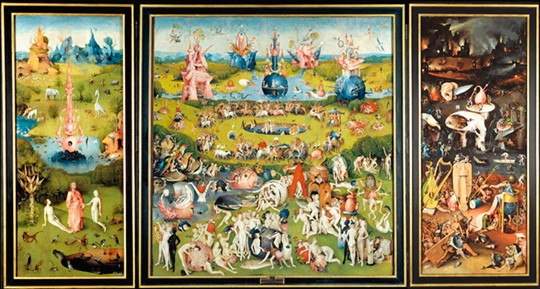Should the term «intestinal flora» be weeded out of our linguistic garden?
Similar to the painting The Garden of Earthly Delights (Figure 1) by Hieronymus Bosch (1450 – 1516), our digestive tract is home to a teeming diversity of life. Bacteria, viruses, fungi and parasites are all part of this complex ecosystem, which is often referred to by the collective term «the intestinal flora».

Figure 1 The Garden of Earthly Delights. Painting by Hieronymus Bosch (1450 – 1516). Wikimedia Commons
It is by no means self-evident that this microbial community belongs to the plant kingdom. Anton van Leeuwenhoek (1632 – 1723), who was the first to observe and describe microorganisms, in fact saw them as small animals – «animalcula» (1).
Today, microbes are classified neither as plants, nor as animals (2). Accordingly, the designation «intestinal flora» is outdated and has been replaced by neologisms such as «microbiota» or «microbiome» (3).
In many contexts, however, the concept of «intestinal flora» may still be useful. For example, there are numerous similarities between tending to garden plants and manipulating the microbes in the intestine (4): we plant seeds (probiotics), add fertiliser (prebiotics), remove weeds (antibiotics), and occasionally we need to roll out a new lawn (faeces transplantation).
«Intestinal flora» may be a linguistic offshoot, but should be left as it is.